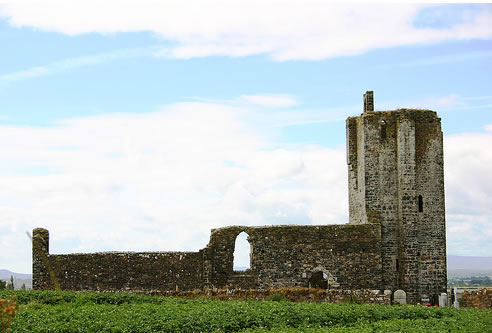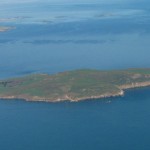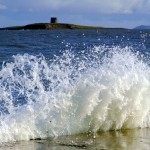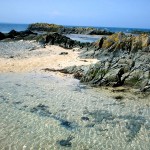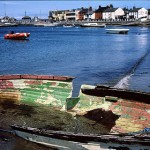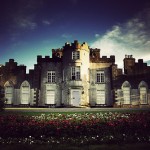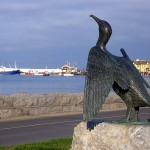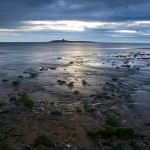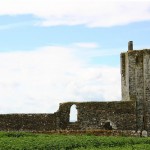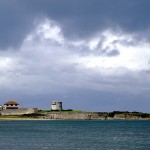History of Baldongan
The ruins at Baldongan are all that is left of a large castle and church. The castle was built around a large quadrangular (four sided) court. The castle had four square towers at each corner. The church was adjoining the castle. Originally the Knights Templar built this fortress in the 13th century on the site of an ancient dún (fort). The knights Templar were a semi-military religious order, founded in 1119. They took vows of poverty, chastity and obedience and devoted themselves to the recovery of Palestine from the Saracens. They played an important part in the Crusades of the 12th. and 13th. centuries. As time went by the order accumulated enormous wealth. This wealth aroused the jealousy of King Philip IV of France, who arranged for charges of heresy to be brought against the order. In 1307 the Pope suppressed the order. At the beginning of the 16th century the castle became the property of the De Birmingham family. Ownership eventually passed to the Lord of Howth through marriage.
Later it came to be owned by the Barnwells, an old Norman family that has been associated with Fingal for many centuries. Finally, in 1642, the confederates held it. The confederates were a loose federation of many elements in Irish life that found common cause against the parliamentary forces of Cromwell. In June 1642 Colonel Trafford and his Parliamentary forces besieged the castle. It was destroyed by artillery and gunpowder and the entire garrison of 200 were put to death. Two priests, who were among the defenders of the castle, were examined on the rack and afterwards deported to France. The Parliamentary forces left it in a ruinous condition and time and weather have all but completed its destruction. Close to the ruins at Baldongan is a field known as the “Nuns’ Stood”, where nuns from Baldongan are said to have stood and look back on the destruction of the castle.
The shelling supposedly originated from troops stationed at Cromwell’s bush, a thorn tree in a hedge in Balcunnin. Another story concerning this bush is that Cromwell slept under it on his way to Drogheda. Other stories claim that Cromwell bombarded Baldongan from the sea, two miles away, and that he fired shots at Lusk round tower, blowing the top off. Cromwell has been blamed for more evil deeds in Ireland than he would have had time to do. In addition there is no record that nuns were ever at Baldongan.

